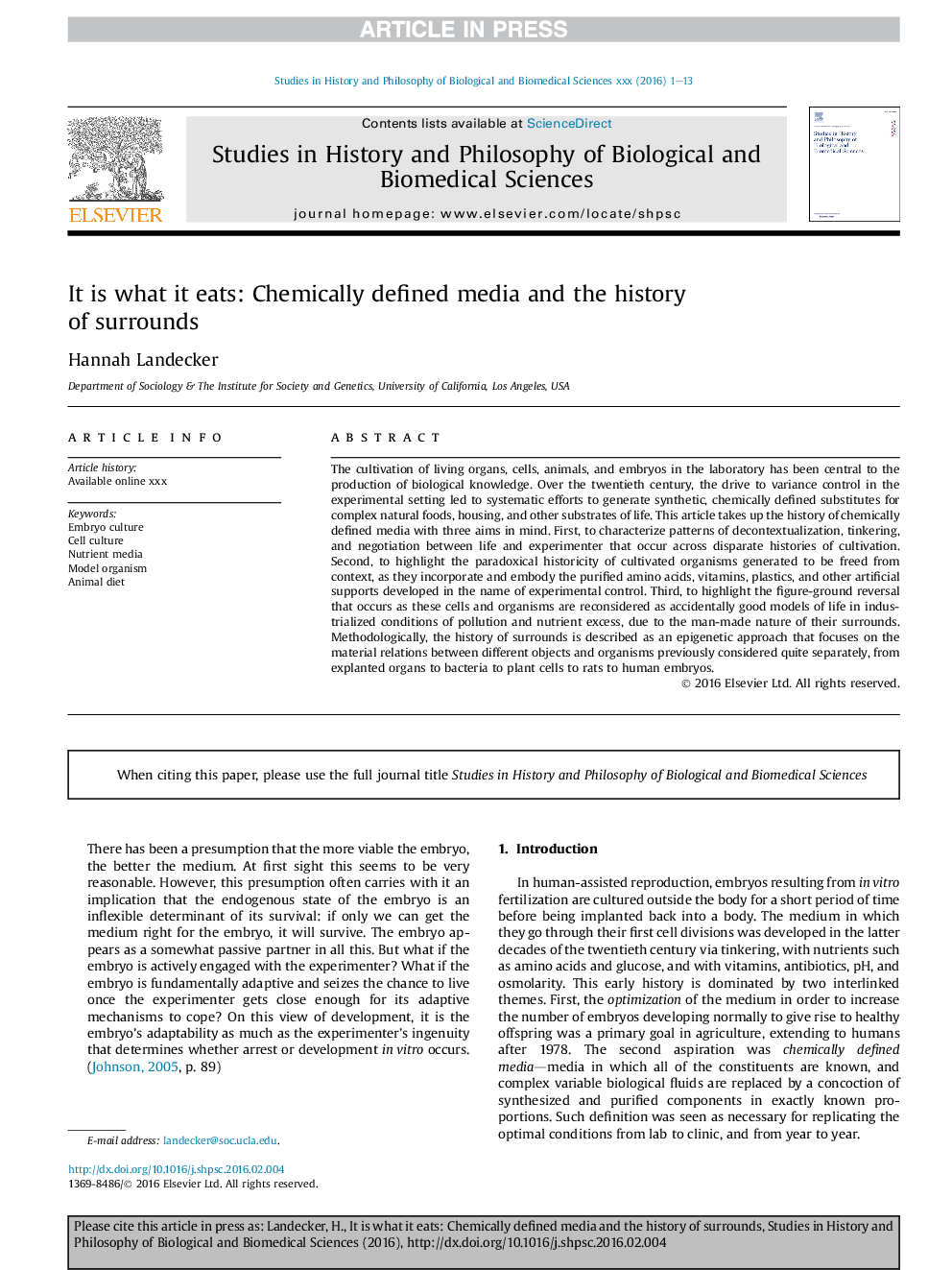| کد مقاله | کد نشریه | سال انتشار | مقاله انگلیسی | نسخه تمام متن |
|---|---|---|---|---|
| 7552265 | 1490508 | 2016 | 13 صفحه PDF | دانلود رایگان |
عنوان انگلیسی مقاله ISI
It is what it eats: Chemically defined media and the history of surrounds
دانلود مقاله + سفارش ترجمه
دانلود مقاله ISI انگلیسی
رایگان برای ایرانیان
موضوعات مرتبط
علوم زیستی و بیوفناوری
علوم کشاورزی و بیولوژیک
علوم کشاورزی و بیولوژیک (عمومی)
پیش نمایش صفحه اول مقاله

چکیده انگلیسی
The cultivation of living organs, cells, animals, and embryos in the laboratory has been central to the production of biological knowledge. Over the twentieth century, the drive to variance control in the experimental setting led to systematic efforts to generate synthetic, chemically defined substitutes for complex natural foods, housing, and other substrates of life. This article takes up the history of chemically defined media with three aims in mind. First, to characterize patterns of decontextualization, tinkering, and negotiation between life and experimenter that occur across disparate histories of cultivation. Second, to highlight the paradoxical historicity of cultivated organisms generated to be freed from context, as they incorporate and embody the purified amino acids, vitamins, plastics, and other artificial supports developed in the name of experimental control. Third, to highlight the figure-ground reversal that occurs as these cells and organisms are reconsidered as accidentally good models of life in industrialized conditions of pollution and nutrient excess, due to the man-made nature of their surrounds. Methodologically, the history of surrounds is described as an epigenetic approach that focuses on the material relations between different objects and organisms previously considered quite separately, from explanted organs to bacteria to plant cells to rats to human embryos.
ناشر
Database: Elsevier - ScienceDirect (ساینس دایرکت)
Journal: Studies in History and Philosophy of Science Part C: Studies in History and Philosophy of Biological and Biomedical Sciences - Volume 57, June 2016, Pages 148-160
Journal: Studies in History and Philosophy of Science Part C: Studies in History and Philosophy of Biological and Biomedical Sciences - Volume 57, June 2016, Pages 148-160
نویسندگان
Hannah Landecker,